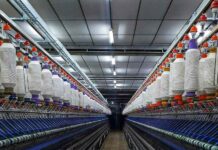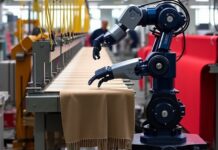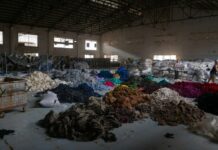The textile machinery sector in China is demonstrating a robust recovery, reflecting the country’s confidence in long-term industrial growth. According to recent reports, sales of textile machinery have surged, highlighting a renewed optimism among manufacturers and a strategic focus on enhancing production capabilities.
As of 2024, China has firmly maintained its position as the leading investor in textile machinery, a status supported by the latest International Textile Manufacturers Federation (ITMF) data. This year, the nation has seen significant increases in the orders for various categories of textile machinery, including knitting, weaving, and dyeing equipment, with substantial growth rates reported across these segments.
In a detailed analysis of the textile machinery market, it was found that the overall economic environment has stabilized, despite ongoing challenges such as geopolitical tensions and fluctuating inflation rates. The National Bureau of Statistics in China indicated that the operating income for textile machinery firms rose by 7.84% year-on-year, highlighting a positive trajectory for the industry. Notably, the sales of knitting and weaving machinery recorded impressive growth figures, while spinning machinery faced some declines due to market saturation.
The demand for textile machinery is not solely driven by domestic needs; international trade dynamics are also playing a crucial role. In 2024, exports of Chinese textile machinery reached approximately $4.69 billion, marking a 3.31% increase compared to the previous year. Key export markets include India, Vietnam, and Bangladesh, with these countries accounting for a significant share of China’s textile machinery exports. This trend underscores China’s strategic intent to strengthen its global footprint in the textile machinery sector.
Moreover, the integration of advanced technologies and automation within the textile machinery landscape is transforming production processes. Manufacturers are investing in smart machinery that not only improves efficiency but also aligns with the growing demand for sustainable and eco-friendly production practices. In particular, the rise of nonwoven fabric production has prompted a surge in the demand for specialized machinery, showcasing the adaptability of the industry to changing market requirements.
Despite a slight decline in certain machinery imports, with imports decreasing by 21.04% year-on-year, the overall sentiment in China’s textile machinery market remains positive. The strong emphasis on innovation and strategic investment illustrates a commitment to addressing both domestic and international challenges.
In conclusion, the Chinese textile machinery industry stands poised for continued growth, driven by a combination of robust domestic demand, strategic export initiatives, and a commitment to innovation. As manufacturers adapt to evolving market trends and consumer preferences, the future of textile machinery in China looks promising, reinforcing the nation’s pivotal role in the global textile market.

































